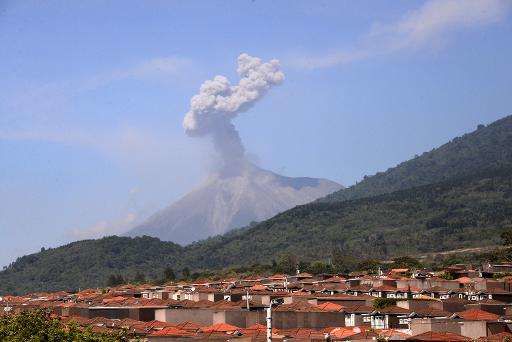At 4:55 a.m. Sunday, ash spilled from the crater of Costa Rica's Turrialba Volcano for nearly an hour. Though the ash barely left the crater, located about 67 kilometer northeast of the capital San José, the wind carried it into the Central Valley — for the umpteenth time in recent months.
The eruption comes less than a week after the volcano
shot a tower of ash 2.5 kilometers into the air, shutting down Juan Santamaría International Airport for the third time since March.
Since Turrialba Volcano re-awoke last October, volcanic ash has dirtied homes, damaged crops and mucked up travel plans. With its frequent eruptions, the volcano has gone from an interesting diversion to a nuisance for nearby residents and visitors.
And experts say the worst is yet to come.
Future eruptions, they say, could jeopardize the health of humans and the environment. They could also cause serious economic damage.
"There is a very high possibility that [the volcano] will reach a higher level of activity," said Lidier Esquivel, the chief investigator of risk management for the National Emergency Commission (
CNE).
Scientists with both the Volcanological and Seismological Observatory of Costa Rica (
OVSICORI) and the National Seismological Network (
RSN) expect Turrialba's eruptions to gradually increase over the next few months until the volcano is erupting on a near weekly basis. Scientists have also confirmed that lava has reached the surface.

Comment: Reports of eruptions and volcanic activity since May 1: